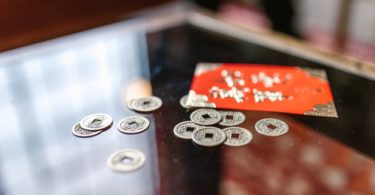Studies show that companies that grow their dividends annually outperform non-dividend payers over the long term. They have also outperformed dividend payers that aren’t consistently raising their distributions. That’s why many investors focus on Dividend Aristocrats, companies that have raised dividends for at least 25 consecutive years.
One stock that will join the club in a couple of years is FactSet Research Systems (NYSE:FDS). It provides subscription-based data services for investors and corporations. The company has raised its payout for 22 consecutive years, and there’s no sign of the trend ending soon.
For many, FactSet Research might be under the radar. Investors who only look at traditional metrics might rule it out as too expensive. Here’s why I think it deserves a spot in a dividend growth portfolio.
Plenty of room for continued increases
For dividend investors, maybe the most important characteristic of a stock is how reliably it sends the checks. The payout ratio — the percentage of net income a company pays out in dividends — is a good measure to figure out if those checks are at risk.
For FactSet, the measure has remained between 24% and 35% for the past decade. Even though the company has raised its distribution more than threefold over that time — from $0.25 per quarter to $0.82 — the percentage of profits it’s paying out has remained roughly unchanged.
The company has grown revenue and free cash flow by 115% and 163%, respectively, over that time. And it has consistently generated more free cash flow than net income. The combination means that, even if revenue is flat, management could likely raise the dividend at the current pace for another 30 years before any trouble. That’s a payout shareholders can count on.
Cash flow makes the stock a better deal than it seems
The company is a cash machine, producing free cash flow — cash generated by operations minus capital expenditures — of between 25% and 30% of sales. That’s in the same neighborhood of companies like Apple and Facebook. It’s maintained this impressive level for a decade.
That free cash flow divided by the market capitalization is called free cash flow yield. Dividing it by the 10-year Treasury rate offers a useful way to look at valuation over time. The ratio compares the company’s cash generation to the risk-free rate of U.S. government debt.
Prior to the pandemic, that ratio held firm between 1.2 and 2. At the stock’s cheapest using that metric, investors were getting twice as much return from owning FactSet shares as they were with risk-free bonds. In the 16 months of the pandemic, the relationship has broken.

The stock now sports a ratio of free cash flow yield to 10-year Treasuries of 2.6. Since a higher number is better, shareholders are getting a lot more bang for their buck.
The stock market has left shares in the dust over the past year. The S&P 500 index is up 36%, compared to a 3.6% drop for FactSet. While interest rates are near all-time lows, the company’s free cash flow yield is still at its average since 2017. If the ratio is going to return to normal, either interest rates or the stock price will need to rise.
Full story on Fool.com




Leave a Comment